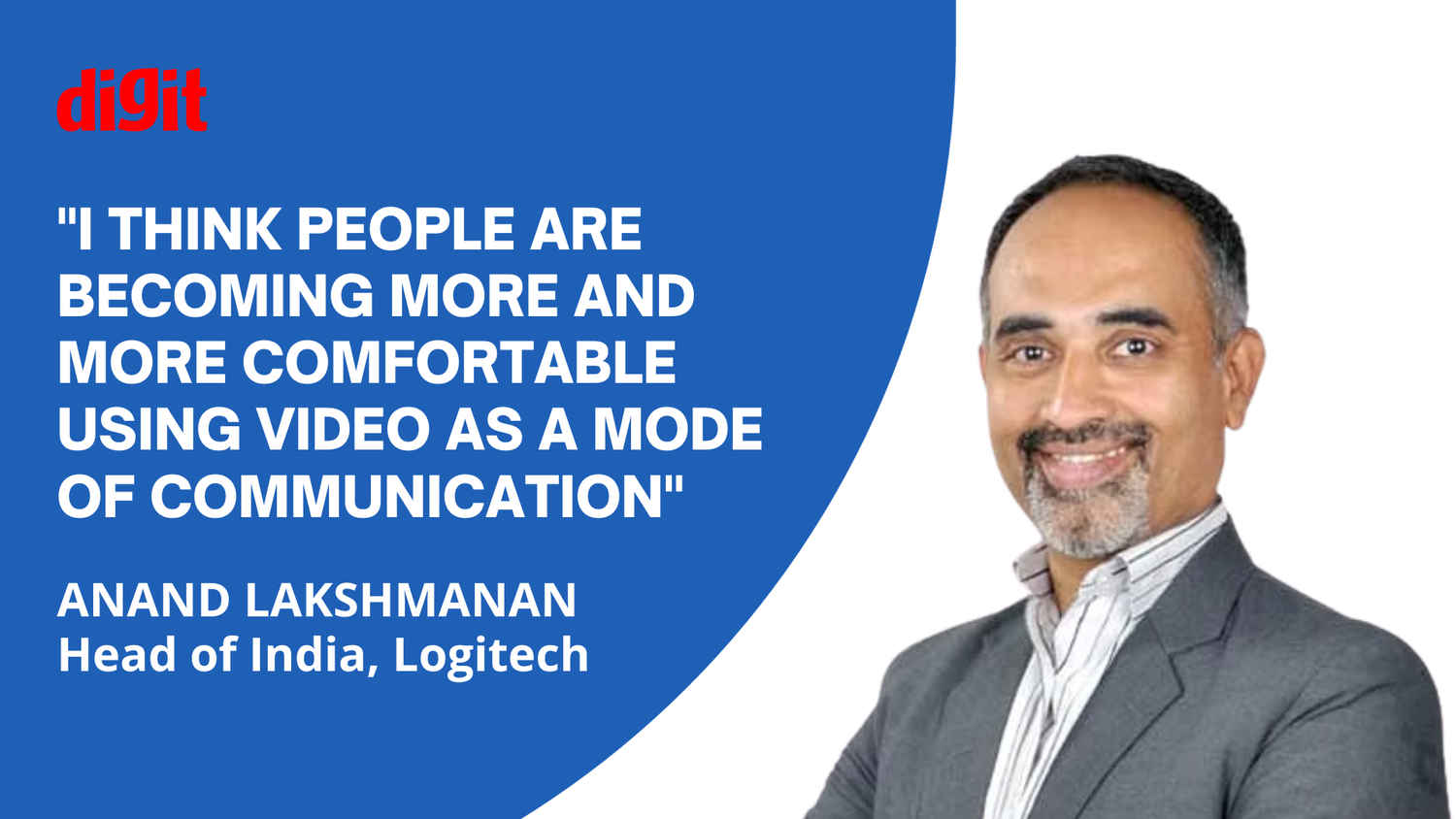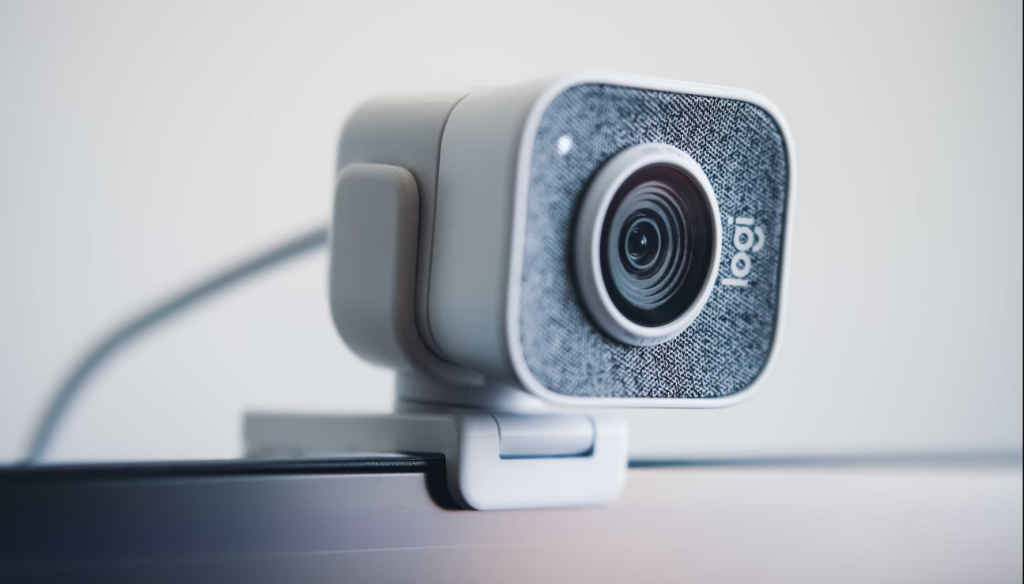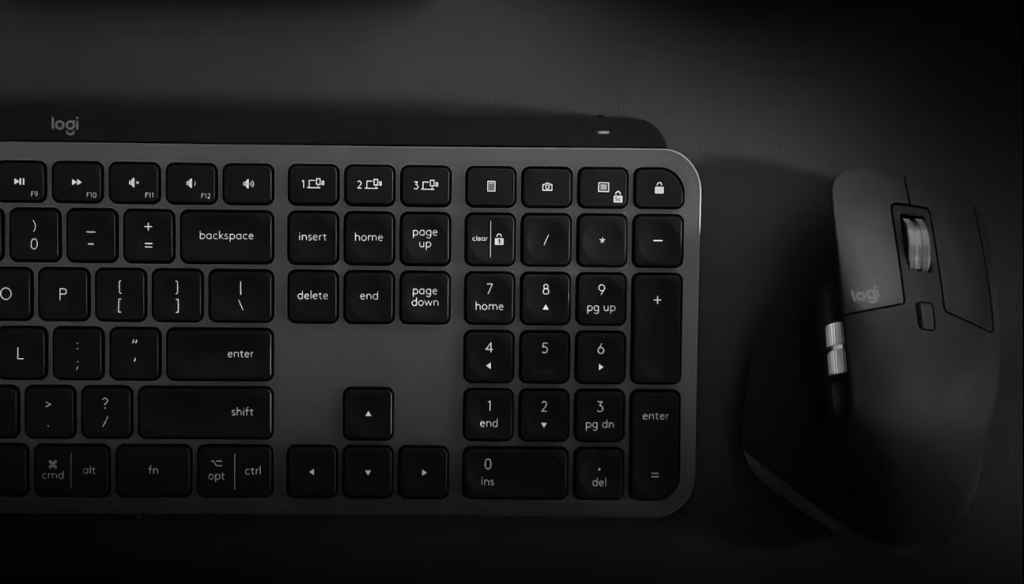Logitech India’s Anand Lakshmanan on the brand’s product development, India’s potential in the tech world, and more!

Through the years, India has risen through the ranks in the world of technology. Be it in terms of product development, consumption, or awareness, we stand at one of the highest pedestals in the world. Now, with global brands like Logitech coming in with product lineups that are bigger than ever and spread across multiple verticals (for example – consumer electronics and enterprise solutions), there are a lot of questions that arise in the minds of people like us who are at the receiving end of these brands’ innovations. So, when I got a chance to speak to Mr Anand Lakshmanan, Head of Logitech’s business in India, during Infocomm India 2023, I asked him a ton of questions. They ranged from talking about the convergence of different verticals within the brand to their future plans in the country.
Here’s a quick look at how our conversation panned out –
When Logitech as a brand, which is a global entity is developing products for different regions, different use cases, especially in the B2B sector, there are differences in the demands of people. So, in that process of development, where does India as a market stand for you?
Almost all of Logitech solutions today are 50% hardware and 50% software. An example, cameras like this (Huddle Series), when we launched it, it had let’s say 10 features. Through software enhancements, we have improved the functionality of the hardware and this is not going to stop. This is how the future is going to be. And all this software that powers Logitech products are actually developed in India. We have a big centre in Chennai, close to a thousand engineers every day wake up in the morning to make the experience of people who use Logitech products better.
Coming back to your core question, we actually do not make different products for different regions. India as a country gets exactly the same solutions that we launch annually. We do not have separate products anywhere in the world. The launches take place globally almost at the same time. Just that in India, we have all the regulations that take a little bit more time because of which the launch dates are slightly different in India. Otherwise, we do not have separate products. Whatever Americans get to use, Indians get to use the same products in India as well.

From a B2B business, if you see a meeting room, challenges more or less are the same around the world, right? We have seen the rise of hybrid work environments, which has people logging in from different locations to be part of a meeting. The challenges that throws up for organisations and for users predominantly are the same. So our objective of providing solutions is also the same in terms of addressing those challenges.
Both on the consumer level and the business level, especially on the business level, how has India developed as a market for brands like Logitech, where they were primarily making consumer-centric products, but now they are shifting into B2B business? What are the core things that have caused that monumental shift from a consumer-centric approach to a more B2B and consumer-centric at the same time?
One of the first trends that I can relate to is the adoption of video because of better internet availability.
Just imagine. Three, or four years back, we were still on what we called broadband. Maybe the DTH guy was the one who was supplying internet, and it used to be through those coaxial cables. What speeds did we get? Maybe about 100 Mbps at that point in time. If you had 100 Mbps, you are probably somebody (special) in the society, right? Because that was the kind of incredible speeds that you could get. Now look at what we have at home. Fiber. 300 Mbps is your lowest or entry-level plan. You have 1 Gbps kind of speeds available for home users. I am not talking about offices. I have worked in offices where for an office of 20 people, we had like 100 Mbps. Today at an individual level, we can have 300 and 1 Gbps. So, the adoption of video is one of the primary reasons that I believe that India is what it is in terms of demand for video solutions.

We are slowly becoming non-camera shy, I would say. Right? You look at the number of people who are doing video calls on WhatsApp. Once upon a time, WhatsApp was primarily used for messaging. Then people said, okay, network is not the same everywhere, let me use WhatsApp for audio calling. Now, almost every second call on WhatsApp is on video. So I think people are becoming more and more comfortable using video as a mode of communication. So that is the reason that I am saying, in the day-to-day life, what we are doing is what we have been doing. And then the third thing is especially in the enterprise space as we have been speaking you know multiple times, except for a few verticals in the market like let’s say healthcare or manufacturing, almost all of the other verticals are still in extreme hybrid mode. Right?
I mean we are all reading in the newspapers, large IT service companies are actually incentivising people to come back to office and still it is difficult for them. This means for the foreseeable future this hybrid is going to stay, it is not going to go away. If hybrid is going to stay, then I think it’s only fair that the organisations look at how to make it easy for customers. So I think that is the first thing that we are seeing. The second thing is that we are seeing that the technology is not going to be able to make it easy for people to adopt hybrid. Collaboration is the name of the game. Without collaborating with your colleagues, without collaborating with your partners, you are not going to be successful as a business. So if that is acknowledged, then what else do you have to do to make collaboration easy for people? So I think these are some of the trends that we as an organisation are seeing that are driving the demand for video solutions.
When you are developing products for both your consumer vertical and the business vertical, how much of the technology insights will be shared between the two development teams? For example, the Hero sensor from Logitech’s gaming mice; how much of the learnings from the development of the Hero sensor will carry on to the development of a product like the MX Master 3?
As a manufacturing company, we take our lessons in the development of the product. We take our lessons into our product evolution. We take feedback from the market. There are things people may fall in love with that we provide. We are no exception. There are obviously things that we make that people want better, right? So we take that feedback, and we try and improvise on our products.
Now coming to your core question of how much of a similarity we are seeing between a consumer range of products and an enterprise range of products. Again, as a manufacturer, we are not going to be the same. As a manufacturing company, we may be reusing some of the components, for example, batteries, and microphones, because some are great. We may be reusing them across different products between these two businesses. But the expectation from the target audience, let me tell you, is very different.
In a consumer business, if you see, people want products that are reliable, but at the same time, very good. At the same time, they are very very competitively priced because they are buying these at an individual level, right? When you look at people who are making purchase decisions for their colleagues in an organisation, of course, budgets are bigger, where they are looking at certification, seamless experience. So if I have to talk about one thing, if you buy a keyboard at an individual level, you may be still connecting it to your computer, using it one way, but your expectation from that keyboard may not be beyond that. But if the same person is working in an organisation, you would want that keyboard to have a facility where the firmware can be updated, because certain developers are certainly going to enhance their software. So, the technical handshake between software and a keyboard in an office environment is much more than at a home environment at our individual capacity. So, while the products can probably be delivering similar functionalities, they expect are still available.

For a user, it is very different when they are making a decision on behalf of an organisation versus making a decision for themselves. You buy a keyboard for 3-4 thousand rupees, you actually at an individual level do not look forward to it performing many different functions but at the same 3-4 thousand rupees keyboard in an office has to do a lot of different things. So from an expectation, we see these two as two different things.
With a lot of different brands coming into India, how has Logitech reacted to this change? Especially in the B2B space a lot of consumer brands are also focusing on providing B2B solutions while also you know dabbling with Logitech’s core competency which has been consumer-centric products.
If you ask somebody who has used a Logitech product why do you think it is a good product? I think it is a good product because I am sure they went through an evaluation process, whether it was a consumer product or a B2B product; when they finally made a decision in favour of Logitech, I am sure they considered a few criteria.
When I as a Logitech representative, meet such people today I of course ask them why did you choose a Logitech product? More often than not one of the answers that I get is good quality at an affordable price. The way I interpret it is of course good quality at a great price but we have also kept it very simple for users. Why did people in the consumer side of our business buy and still love Logitech products is also because of our simplicity. It’s the same philosophy that we have carried to our enterprise solutions as well. The most sophisticated of our cameras can be deployed in less than a few hours. Our salespeople carry these cameras to organisations. They want to give them a feel for how the cameras will perform in their environment. They don’t have all day. They put up the demo in a matter of hours. Which means we got to keep it simple. We have to deliver a seamless experience in spite of the sophisticated technology.
At a user level, we need to keep it as simple as possible. Most cameras today (from Logitech) come with just one cable. So you actually cannot go wrong. Earlier it was USB A. Now things are moving towards USB C. Laptops or any computer for that matter have only USB C ports these days. So what can go wrong with a single cable which has a USB C? You just plug that in. Everything gets fired up, and you are actually good to go within no time. So the philosophy of our consumer business which helped us succeed and made people fall in love with our brand. I think personally was ease of use and the simplicity, which we are definitely wanting to carry forward. And we are already carried forward in a lot of our enterprise products. We will continue to see Logitech investing energies to make this happen in our future products as well.
Satvik Pandey
Satvik Pandey, is a self-professed Steve Jobs (not Apple) fanboy, a science & tech writer, and a sports addict. At Digit, he works as a Deputy Features Editor, and manages the daily functioning of the magazine. He also reviews audio-products (speakers, headphones, soundbars, etc.), smartwatches, projectors, and everything else that he can get his hands on. A media and communications graduate, Satvik is also an avid shutterbug, and when he's not working or gaming, he can be found fiddling with any camera he can get his hands on and helping produce videos – which means he spends an awful amount of time in our studio. His game of choice is Counter-Strike, and he's still attempting to turn pro. He can talk your ear off about the game, and we'd strongly advise you to steer clear of the topic unless you too are a CS junkie. View Full Profile





